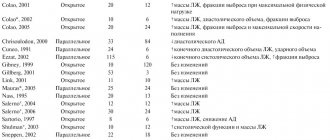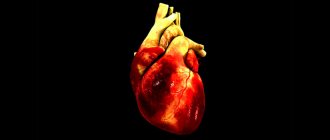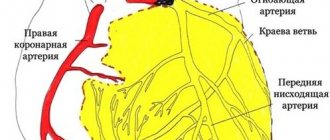Pathologies of the cardiovascular system require regular monitoring and special care for the patient. They are dangerous due to the rapid development of an acute condition and sudden death of the patient. To maintain a stable condition, the patient must live according to the regimen prescribed by the doctor and control his emotional state, but this is not always possible without outside support. People with cardiovascular pathologies often suffer from increased anxiety and fear of death, they are afraid of being alone for a long time or of being without vital medications at hand. Such patients require the help of a professional caregiver at home or in a boarding house. Peace, proper routine, care and attention to their needs have a calming effect on the wards and improves their well-being.
Principles of caring for patients with cardiovascular diseases
To prevent the development of acute conditions in the patient, the nurse carries out a whole range of preventive measures every day. This is painstaking work that requires discipline and patience from both the caregiver and the ward, but the result is worth it. Strengthening the heart muscle leads to an overall improvement in physical and psychological condition.
Proper care for patients reduces the risk of pathologies of the cardiovascular system. It assumes:
- daily monitoring of blood pressure and pulse,
- compliance with diet and medication,
- regular cleansing of the body,
- therapeutic massage to improve blood circulation,
- moderate physical activity,
- prevention of thrombosis and thromboembolism in bedridden patients,
- creating a calm environment and psychological support.
The caregiver must be able to recognize signs of dangerous conditions and have emergency medical skills. The life of the ward may depend on his qualifications.
Symptoms of Cardiovascular Diseases
Arrhythmia
An accelerated or slowed heartbeat is not dangerous in itself, but it may be the first manifestation of a serious pathology. Treated with special medications
Dyspnea
Stagnation of venous blood leads to excess carbon dioxide and lack of oxygen in cells. An acute attack is called cardiac asthma and in severe cases is accompanied by pulmonary edema. A patient with shortness of breath needs fresh air first. In addition, tourniquets on the legs and inhalation of humidified oxygen may be required.
Edema
Fluid retention in the body occurs due to overflowing of the veins and blood particles leaving their walls. Swelling reduces the protective properties of the skin, causing a feeling of nausea and bloating in the abdomen. To normalize fluid outflow, diet and diuretics are required.
Pain in the heart area
This is a sign of poor blood supply to the organ. With prolonged oxygen starvation, biochemical changes occur in the heart muscle, manifested by pressing sensations, weakness, and profuse sweating. In mild cases, the pain is relieved with a validol or nitroglycerin tablet. However, an attack can be caused by a developing myocardial infarction. If the syndrome does not go away even after taking medications, the patient requires emergency hospitalization
Increased blood pressure
Regular increases in blood pressure cause the development of hypertension and concomitant dysfunction of the brain and kidneys. To avoid this, the patient needs to get enough sleep, measure blood pressure twice a day, give up bad habits and take medications regularly. If there is a sharp increase in blood pressure (hypertensive crisis), you need to call an ambulance
Collapse
This is a sharp decrease in blood pressure, provoked by acute vascular insufficiency, myocardial infarction, severe bleeding, including internal bleeding, poisoning or infection. In this state, the patient’s breathing and pulse become more frequent, and the extremities become cold. Possible loss of consciousness. The patient needs to be warmed and positioned so that blood flows to the brain. Caffeine-containing medications are recommended to raise blood pressure.
Acute heart failure
Acute heart failure is one of the most dangerous conditions in cardiological practice. This is the final stage in the development of all progressive heart diseases. In acute heart failure, the pumping function of the heart quickly decreases, and therefore its ability to supply tissues and organs with blood and oxygen. The main threat of acute heart failure is death.
- Emergency care at Ilyinsky Hospital
Ilyinskaya Hospital is ready to provide emergency cardiac care around the clock. One of the key skills of our specialists is the correct strategy for managing patients with acute heart failure. If there are indications, the patient will urgently undergo endovascular surgery to stent the coronary arteries. The Ilyinskaya Hospital has a cardiac intensive care unit. Invasive monitoring methods are used when catheters are installed in the cavity of the heart, allowing one to respond to changes in its functioning much earlier than the patient feels it and take the right proactive actions.
- Causes of acute heart failure
There are many causes of acute heart failure. The most common is myocardial infarction. After coronary artery thrombosis, a large fragment of the heart muscle dies, and the power of the “main motor” decreases. Other causes may be diseases of the heart muscle: hereditary diseases (cardiomyopathies), diseases associated with inflammation - myocarditis, progressive alcoholic heart disease. Also among the causes are various valve defects, which can occur with minimal clinical symptoms for a very long time. If you do not resort to cardiac surgery, valve defects can manifest as acute heart failure (or decompensation of chronic heart failure, depending on the type of defect). In simple terms, acute heart failure is the end point in the development of almost all heart diseases and is often the immediate cause of death if very complex treatment is not provided in time.
There is another interesting type of heart failure. With it, the heart as a whole can supply the organs with blood in a more or less adequate manner. But this is given to him by an increase in pressure in one of the chambers - in our “main pump”, in the left ventricle. In this situation, the pressure in the pulmonary circulation increases sharply - in the vessels of the lungs. Severe shortness of breath and pulmonary edema occur. A person can die with formally normal cardiac output.
This type of heart failure is difficult to track because changes on the cardiogram are minimal, the pumping function of the heart is normal, and a catastrophe occurs in the blood vessels of the lungs. Today there are many such patients, since long-term hypertension
If left untreated, it leads to this type of heart failure.
And it is very different from another type of heart failure, in which there is a decrease in the pumping function of the heart - for example, with a heart attack
.
- Treatment of acute heart failure
A patient with acute heart failure should be observed in the intensive care unit. Treatment of such patients is difficult.
Medications.
If there is serious damage, it is not always possible to support heart function with medications. The actions of cardiac resuscitators can be compared to the actions of a virtuoso violinist who is trying to adjust the heart rate, cardiac output, dilate or constrict blood vessels differently in different regions and ensure normal blood flow to the heart vessels by regulating acceptable blood pressure. To successfully treat a patient with acute heart failure, the cardiac intensivist must consider a huge number of factors.
Stenting.
If the cause of acute heart failure was a myocardial infarction, stenting can be performed to eliminate the clot and restore blood flow.
Of course, provided that we manage to do this in the next 12 to 24 hours after the development of thrombosis, when the heart cells are still alive. To learn more.
Extracorporeal membrane oxygenation.
A situation often occurs when the condition of the heart muscle is so severe that there is simply no target for the action of medications. In the West, various devices to support blood circulation are actively used in such patients. In particular, you can take venous blood from a person and run it into a special device that will enrich it with oxygen. Such blood is poured into a person’s veins, then enters the lungs and is further enriched with oxygen. This way the total amount of oxygen in the blood will increase and save a person’s life. This technology is called extracorporeal membrane oxygenation.
Artificial left ventricle.
You can install a special device inside the heart that takes over part of the function of the left ventricle. These devices may be temporary or permanent. We are talking about an artificial left ventricle, which is now being actively installed in the West. Russian scientists from Zelenograd have established the production of left ventricles of very decent quality. Placement of an artificial left ventricle in a patient with acute heart failure may be a last resort. The person will live with him as long as possible. Or it may be a temporary measure until a heart transplant is performed. Models of artificial left ventricles can work for several years. However, this is a short period of time for a young person, and such patients often require a heart transplant.
Diet for cardiac diseases
The patient must strictly follow the diet prescribed by the doctor. The diet should include sufficient quantities of foods rich in potassium and proteins:
- lean meat,
- vegetables,
- cereals,
- eggs,
- fish,
- greenery,
- high protein bread,
- potato,
- butter,
- cottage cheese.
It is recommended to eat 5-6 times a day in small portions. You need to have dinner no later than 2-3 hours before bedtime. Fluid intake should be limited by half, and salt should be replaced with spices, as it retains fluid in the body.
Physiotherapy
Caring for patients with cardiovascular diseases involves mandatory physical activity. The doctor selects a set of exercises individually depending on the patient’s health condition. The doctor will recommend special poses to relieve spasms, increase chest volume and relax muscles. Exercises should be performed at a slow pace, controlling breathing and smoothly changing positions. The sudden transition may cause shortness of breath or irregular heart rhythm.
It is recommended to start doing simple light exercises immediately after sleep, without getting out of bed. This is necessary to prepare the cardiovascular system for the climb. You need to train 3-4 times a day. The duration of classes is 10-25 minutes.
In addition to warming up for joints, the complex includes:
- balance exercises,
- training with a stick and ball,
- breathing practices.
In addition, daily walking for 30 minutes to 2 hours is necessary. Moderate aerobic exercise strengthens the heart muscle and blood vessels, normalizes blood pressure and metabolism.
Living conditions in boarding houses "Doverie"
Our specialists will provide patients suffering from various pathologies of the cardiovascular system with comprehensive care. Careful observation and timely assistance will prevent the development of acute conditions in our patients.
We accept elderly people with heart disease for rehabilitation, for example, we provide rehabilitation for patients with myocardial infarction, offer permanent residence, and also organize patronage. The Trust network of boarding houses for the elderly with rehabilitation has created comfortable conditions for cardiac patients. Our guests can count on:
- for medical care at any time of the day;
- regular observation by a doctor;
- dietary tasty food;
- comfortable rooms with functional furniture;
- favorable psychological environment;
- safe area for walking;
- a variety of pleasant leisure activities.
Friendly staff not only provide physical care for patients, but also help people with cardiovascular diseases quickly adapt to new living conditions and remain socially active even when lying down.
Relatives of our wards can visit them at a convenient time and always stay in touch via phone or instant messengers. We invite you to take a tour of any of our boarding houses so that you can personally see the conditions in which our guests live and communicate with our specialists. Leave a request on the website. Our manager will answer all your questions.
Acute heart failure (AHF) is a severe pathological condition that develops in patients with various heart diseases and hypertension. This is one of the most common reasons for calling an ambulance and hospitalization of patients, as well as mortality in our country and around the world. The main manifestations (symptoms) of acute heart failure are:
Heavy, frequent (more than 24 per minute) noisy breathing - shortness of breath, sometimes reaching the level of suffocation, with predominant difficulty in inhaling and a clear increase in shortness of breath and cough in a horizontal position. A sitting position or a lying position with the head of the body raised high alleviates the patient's condition. Wet, squelching wheezing/sounds are often heard when breathing,
interrupted by coughing, in the terminal stage the breathing takes on a bubbling character, with the appearance of foam at the mouth.
The patient is characterized by a sitting posture with straight arms resting on the knees.
Acute heart failure can develop very quickly and lead to the death of the patient within 30-60 minutes. In most cases, 6-12 or more hours pass from the first clinical signs to severe manifestations of AHF, but without medical care, the absolute majority of patients with AHF die.
First aid measures
If the above symptoms of AHF appear in patients with hypertension or heart disease (but not lungs or bronchi), it is necessary:
Call emergency medical assistance. Place the patient in a sitting position, preferably in a chair with armrests, on
which he can lean on and engage the intercostal muscles in the act of breathing.
Provide physical and psycho-emotional peace and fresh air. Place your feet in a large container (basin, tank, bucket, etc.) with hot water. In extremely severe cases, tourniquets are applied to the legs in the groin area,
compressing superficial veins, but not deep arteries, which reduces blood flow to the heart and thereby facilitates its work.
If there is experience in the use of nitroglycerin in a patient or a person providing first aid, it is prescribed in a dose of 0.4 (0.5) mg (inhalation into the oral cavity is carried out under the root of the tongue, the tablet/capsule is placed under the tongue, the capsule must first be bitten, do not swallow). If the patient’s well-being improves after using nitroglycerin, it is reapplied every 5-10 minutes until the emergency medical team arrives. If there is no improvement in the patient's well-being after using nitroglycerin, it is no longer used.
Attention! A patient with AHF is strictly forbidden to get up, walk, smoke, drink water and take liquid food until special permission from the doctor. You should not take nitroglycerin if your blood pressure is less than 100 mmHg. Art., with severe headache, dizziness, acute impairment of vision, speech or coordination of movements.
All patients with hypertension or heart disease with shortness of breath and swelling in the legs should discuss with their doctor what medications should be taken if AHF develops, clearly write down their names, dosage and time sequence (algorithm) for taking them, and also check with the doctor if what manifestations of the disease require urgent medical attention. Each such patient needs to create an individual first aid kit for AHF and constantly have it with him.
Source: Boytsov S.A., Ipatov P.V., Kalinina A.M., Vylegzhanin S.V., Gambaryan M.G., Eganyan R.A., Zubkova I.I., Ponomareva E.G., Solovyova S. B., “Organization of clinical examination and preventive medical examinations of the adult population.” Guidelines. 2nd edition with additions and clarifications, M., 2013.










